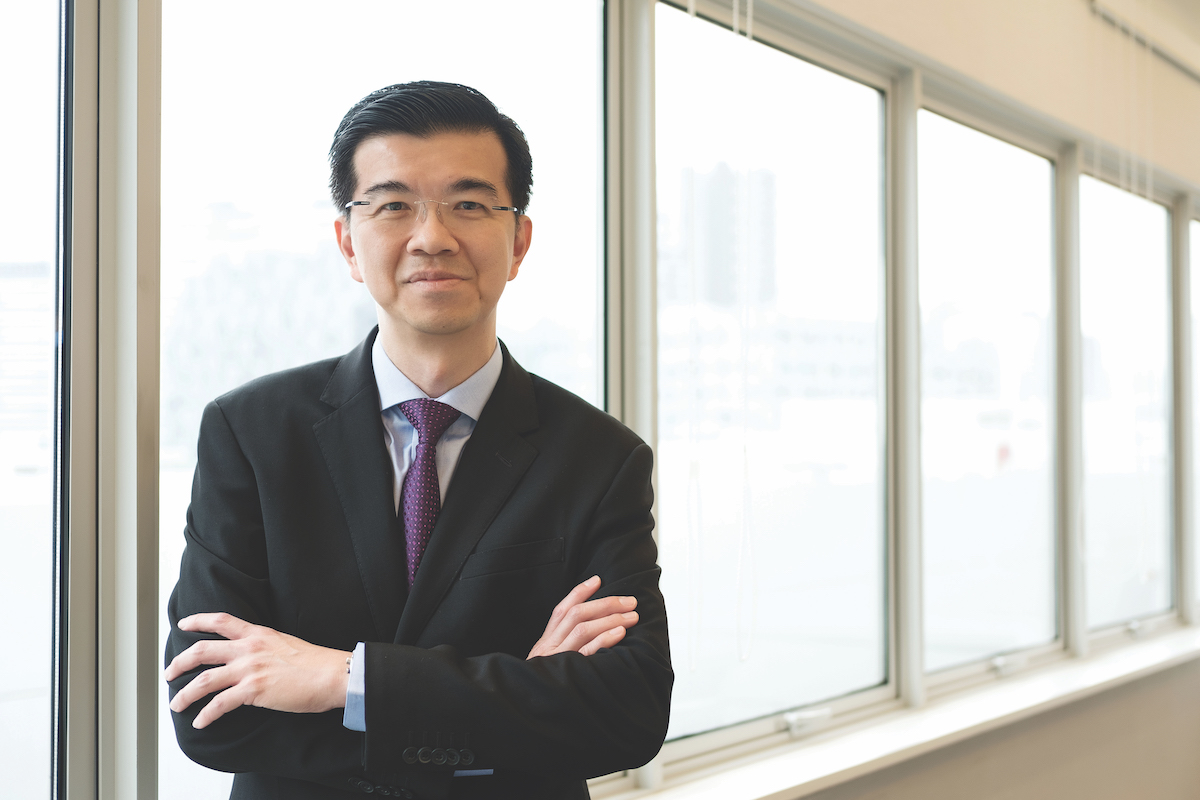The Continental Automotive Revolution: Lo Kien Foh
Connected car experts Continental Automotive are confident they can transform a long-held fiction into a reality by facilitating the launch of fully autonomous vehicles by 2025.
In 1982, American audiences were transfixed by their television sets as a slick black 1982 Pontiac Firebird Trans Am charged ruthlessly towards criminals, dramatically jumping rivers and ditches, and shooting up clouds of dirt in its wake. While car chases traditionally draw a crowd, more impressive was the vehicle’s ability to maintain regular conversation with its crime-fighting partner throughout – a young, leather-clad David Hasselhoff.
Knight Industries Two Thousand, or ‘KITT’, was not only the real star of NBC’s Knight Rider (sorry, Hoff); it was one of the first depictions of an intelligent vehicle with automated driving capability, complete with voice synthesiser to communicate with its driver in English, French or Spanish.
Envisioning a fully automated car

In the 80s, the intelligent car was a popular fiction, whether it be the truck that is secretly an Autobot from Planet Cybertron in Transformers, or the sentient bully-slaying classic Plymouth Fury in Stephen King’s Christine, and each new iteration was as incomprehensible in reality as a time machine in the form of a DeLorean DMC-12.
Today, for Continental Automotive, the dream of a fully automated car is only 8 years away. While this vision may not include the turbo-boost, eject button or tear gas launcher in KITT’s original arsenal, the self-driving model will be complete with intuitive interfaces, connected information-sharing between vehicles and infrastructure, hazard and congestion prevention, and the ability to stop, start, park, change lanes, and everything in between.
"Today we have a partially automated system, but not fully automated. Our vision is that by 2020 a highly automated driving system will be ready, and then, by 2025, fully autonomous cars. That’s our roadmap," says Lo Kien Foh, Managing Director of Continental Automotive Singapore.
Our vision is that by 2020 a highly automated driving system will be ready, and then, by 2025, fully autonomous cars.
The best part about intelligent cars, according to Lo, is their ability to incorporate human interfaces, like KITT’s, to communicate in a way people are more likely to respond to. "I am very interested in cars that have gadgets and capabilities that combine a clear and good interface for passengers. Human Machine Interface (HMI) is important; I think truly autonomous cars need a human touch," he says. "For example, with the blind spot in car mirrors, the vehicle could signal to the driver that there is a potential danger they cannot see in the form of a voice activation, rather than a beep or a light."

Making the dream a reality
Recent years have seen more motor vehicles equipped with Level 0 assistance features, which allow the car to issue warnings without intervening, as well as some Level 1 capabilities such as starting up the car, emergency brake assistance, parking distance control, and adaptive cruise control. New developments in hands-free parking and traffic jam assist serve as Level 2 automated features that allow drivers to take their hands off the wheel and delegate much of the work to the car itself.
These will keep evolving to allow the car more control, especially when locked in heavy traffic, while a smashed side mirror will be a thing of the past – removed entirely to make way for more sophisticated cameras and proximity sensors for predictive control.
Lo says it’s going to take more than visionary technology to make automated driving a reality. Maintaining momentum can only be achieved with access to up-to-date information, ongoing discussion and collaboration between the best minds from industry and society. To support this activity, Continental is also engaged in the 2025AD.com web page, a neutral information platform on automated driving.
"There are so many topics and different people working on making automated driving a reality right now, and everyone is working on their own thing, isolated from others. It’s not only technology; there’s also research, regulatory systems, sustainability goals, and so on," Lo explains. "A website like this brings everyone together to generate public alignment on one goal and encourages public discussion, so ideas are shared and people can make progress, rather than reinventing the wheel. We want to mobilise people to move faster towards the launch of an autonomous vehicle."
Focused on R&D
Continental Automotive has had a strong focus on research and development since it was established in Singapore in 1997. The region has served as a generative hub of innovative activity, and the organisation has invested in one of Asia’s largest R&D centres. Boasting a total floor space of 16,250 square metres, it’s home to more than 1,200 employees testing and creating technologies for the design and development of automobile electronics and technologies.
This includes instrumentation and driver HMI, multimedia connectivity, and body and security work with the OEMs, alongside commercial and aftermarket operations. In 2015, Continental also launched its Road Database project to collate data on road geometry and layout by deploying vehicles with built-in sensors to record data that is then wirelessly transmitted to a secure back-end location.
"That data collection is an important step towards highly automated driving. The information can be shared with all connected vehicles as part of our eHorizon software," says Lo. "This software integrates topographical and digital map data with sensor data to alert connected vehicles of upcoming conditions including speed limits, potential hazards, and congestion. Reducing congestion is a huge benefit of autonomous driving."
Transforming Singapore into a global smart city
Continental has also expanded its reach to government groups and academic institutions to collaborate on the design and production of digital software that supports the goal of transforming Singapore into a leading global smart city. "Other than selling new hardware and software for the automotive sector, we’re advancing in mobility services," says Lo.
"Our Park&Go @SG app, launched in Singapore at the end of 2015, is a very good example of the work we’ve been doing in this space." Developed as a joint venture with A*STAR’s Institute for Infocomm Research (I2R), as well as the Technical University of Munich, TUM CREATE, Park&Go @SG helps drivers locate car parks, and is the first of its kind that can accurately predict the number of parking lots available by the time drivers reach their destination.
"To be sustainable, our research must consider the whole ecosystem; not only hardware and software, but the services that bring the 2 together, the behaviour of the people and the systems in place," says Lo. "Singapore is a small country that has readily available data-gathering capabilities that we can utilise to work on even more smart-mobility services." The company is also working with Nanyang Polytechnic to develop a new gaming application called QconQ, to be launched within Continental, but not available to the public. "QconQ is a platform for people to understand what represents good quality in the automotive industry," explains Lo.
The Trend Antenna
Continental is also collaborating with Nanyang Polytechnic on what Lo refers to as the ‘Trend Antenna’ – a future-looking application that reviews markets, identifies upcoming trends, and predicts future scopes of development. These projects are developed by amalgamating Continental’s engineers with current students to feed off the fresh ideas and creativity of young minds while also providing those students early exposure to the market and upcoming trends.
To be sustainable, our research must consider the whole ecosystem; not only hardware and software, but the services that bring the 2 together, the behaviour of the people and the systems in place.
"There’s a competency we are trying to build within the university curriculum. Joint ventures with universities means students don’t just learn from textbooks, but also from the industry, working together with engineers, getting one-on-one coaching," says Lo. The Singapore Institute of Technology has also been collaborating with Continental to develop its new Intelligent Transportation Systems Engineering course, specialising in the role of telematics.
"We want the universities in Singapore to be competent and prepared to enter the automotive space of the future, to understand and align themselves with the Smart Nation Platform, and ultimately help make Singapore and other cities in the world truly connected," Lo adds.
As the years roll on, many regions and organisations are in the race to produce this feat of engineering and transportation. Whether the more advanced iterations will be used as the automotive counterpart to David Hasselhoff’s crime-fighting duo, or as an efficient way to get people safely from A to B without contributing to congestion, the autonomous car is getting closer.